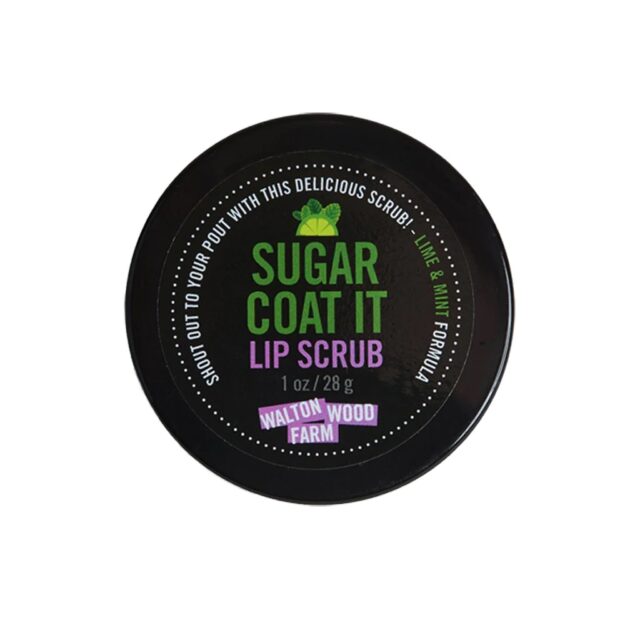
Intro
Most of our reviews are pretty long — and take a long time to produce — because we want to provide enough info for you to actually determine whether the gear we tested will work well for you.
But we get asked to check out an increasingly wide range of products, and sometimes, we just want to tell you about something we’ve been using and loving lately.
So that’s where this monthly series — Stuff We Like — comes in, where we keep you current on a broad range of stuff we’re currently digging.
And if there’s something you love that you think we ought to check out, drop us a note in the comment section below.
The Original Muck Boot Company Women’s Original Ankle Boot
MSRP: $120
Size Tested: 8
Kristin Sinnott: This past spring, I was on a mission to find comfortable rain / mud boots. I ordered a ridiculous number of boots from various brands and none of them were what I was looking for. Some were too flimsy, others were extremely uncomfortable, and others had too narrow of a toe box. I thought my quest was simple — I wanted a waterproof, uninsulated rain boot with a good sole that would be comfortable to wear for hours, warm enough to wear for apres ski in muddy parking lots, but also not so warm that I couldn’t wear them on warmer days to walk on my dusty, but also sometimes very muddy, road. Fortunately, I finally found the Original Ankle Boot.
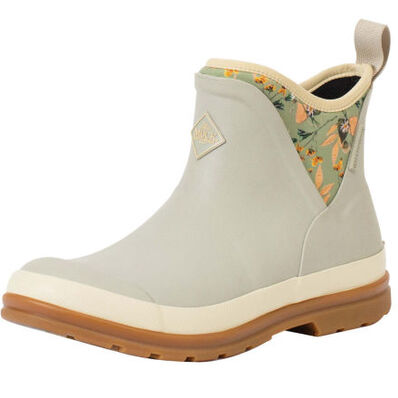
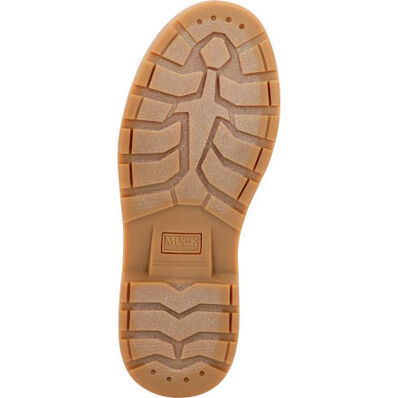
After testing the Original Ankle Boot while running through lots of puddles with my son, I can say they’re pretty much 100% waterproof; the boots’ molded PU footbed with memory foam make them quite comfortable, too. Since I started testing them in late spring, I’ve found the boots to be too warm to wear on hot days. Instead, I prefer to wear them in temperatures below 70℉ / 21℃, which is in keeping with the temperature range Muck recommends.
The Original Ankle Boot is easy to slide in and out of, despite my rather large ankles and their somewhat limited range of motion. As the temperatures start to drop, I’m excited to wear the boots more often. As winter approaches, I’ll be able to see how they perform in cooler temps and on slick surfaces.
Norrøna Falketind Paclite Pants
MSRP: $319
Size Tested: L
Blister’s Measured Weight: 280g
Jed Doane: Living in the Northwest, I’ve been stuck in wet conditions too many times to count, so I’ve started bringing rain pants with me on longer day hikes. These ultralight pants from Norrøna have found a permanent place in my pack because of their extreme packability, light weight, and smart design.
The Falketind Paclite Pant is well thought out, with long lateral leg zippers that make it easy to get in and out of when wearing bulky boots. The one strategically placed right anterior thigh pocket has a tight mesh phone holster on the inside and a loop for an avalanche transceiver. The waist adjustment is also well-designed, using a hook system on both hips for a customizable fit. Many of these waist hook systems feature a lot of elastic, which loosens overtime and eventually becomes useless. These pants use only minimal elastic and haven’t stretched out at all. Other notable design features include lace hooks and Velcro ankle closures.
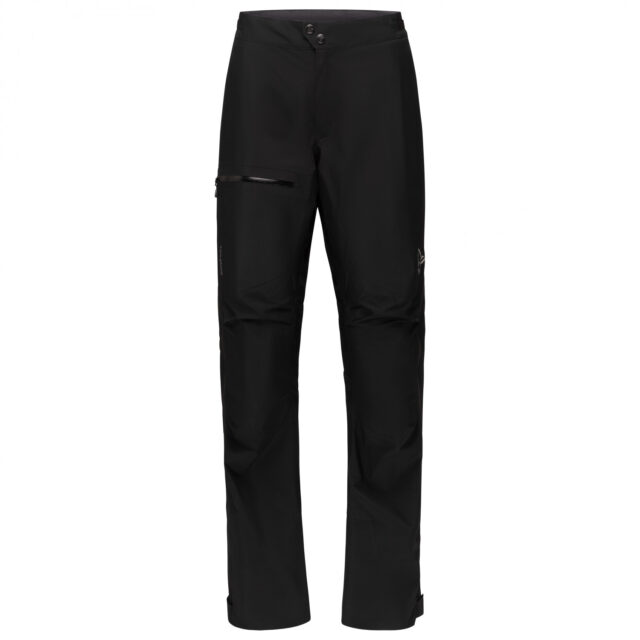
Gore-Tex Paclite isn’t known as the most breathable membrane, and there is a small breathability trade-off with these pants versus other more breathable options, but the combination of packability, breathability, and durability in a pair of pants designed to be worn on the trail is much appreciated. The extended side vents were more than enough ventilation for hiking in wet conditions. I found a men’s Large to fit my long and thin frame perfectly, and was pleasantly surprised by the range of motion and lack of restrictiveness that their fit allowed. I dragged the Falketind Paclite Pant through quite a bit of brush on and off the trail and was pleased by the durability of the face fabric, given its soft feel and generous range of movement compared to 3L waterproof pants. I found the waterproofing to be adequate and haven’t had any issues with water soaking through so far. Norrøna also makes a Falketind pant made with a standard 3L Gore-Tex build that shares many of the same design features, a good option for those looking for a more durable pant without the same packability.
Overall, the Norrøna Falketind Paclite pants are a great choice for those looking for ultralight rain pants that are easy to toss in a pack. They deliver when needed.
Leatt Knee Guard AirFlex Hybrid
MSRP: $119.99
Luke Koppa: I’ve never been able to comfortably pedal in knee pads. Until I tried this pad from Leatt.
With other knee pads, even pretty minimal ones designed with pedaling in mind, I always end up getting some irritation (and in the worst cases, actually draw blood) on the back of my knee where the pad’s grippy material rubs. This means I typically just keep them around my ankles until the descent, which is fine, but not ideal; I mostly just think it looks and feels silly, but it’s particularly annoying when wearing pants.
Anyway, Leatt’s Knee Guard AirFlex Hybrid is the only pad I’ve used that has yet to cause major skin irritation for me. I’ve so far been able to pedal in it for hours, which is awesome. It’s tough to nail down exactly why, since this pad still relies on grippy silicone material at the openings to stay up, but it just works for me. My hunch is it’s because this Leatt pad uses a long and very stretchy elastic that’s not actually that tight. It’s snug enough to stay put, but not so tight that it’s constantly being flexed / moved up and down on my leg during each pedal stroke, as some ultra-tight pads will.
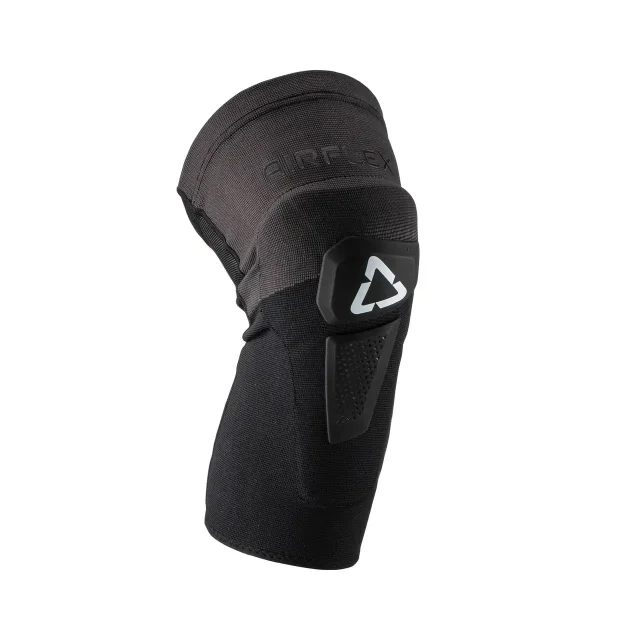
The AirFlex Hybrid falls somewhere in the Trail / Enduro pad category, with no significant side padding but a fairly large, substantial, and flexible pad covering the front of the knee. There’s also a small “skid plate” that’s supposed to reduce the chance of it grabbing during a slide and pulling the pad away from your knee; I have yet to truly test this, but it seems like it couldn’t hurt, relative to a similar pad without the plate. On the back of the AirFlex Hybrid, there’s a more breathable material and a fully open panel behind the knee, which makes this pad pretty breathable, but not mindblowing in that regard.
Due to its exceptional comfort on the uphill and decent protection on the down (for a pedal-minded pad), the Leatt Knee Guard AirFlex Hybrid has become my go-to option for trail rides.
kora Shola Zip 1.0 Yak Basleayer
MSRP: $160 (currently on sale for $80)
Size Tested: Medium
Kara Williard: Well, this is definitely my first experience wearing yak wool, but the concept interested me even before trying Kora’s yak baselayer. After spending quite a few days in the Shola 1.0 Zip Baselayer, I am pretty excited by yak wool as a great alternative to merino / sheep wool.
My first impression of the material is that it feels quite soft and smooth, even when compared to some of the softer wool baselayers out there. I am surprised to say that the yak wool feels unexpectedly soft against the skin and offers an impressively smooth feel.

I took this baselayer as my only shirt on an overnight backpacking trip where temperatures ranged from 30-75° F. I felt that the Shola provided great temperature regulation, in addition to being really quick drying for when temperatures were on the warmer side. The Shola 1.0 is also a ¾ zip, which helps improve ventilation.
Size-wise, a kora Medium fits me well, aside from being a bit short in the torso. Realistically, I would probably choose a Large in the future, just for more length. I’ve also been quite careful about washing the Shola on cold and hang-drying to prevent shrinkage. Aside from that, I have been really pleased with my first experience wearing yak wool, and for those who find even some of the best merinos to still feel slightly itchy, I think yak could be a great alternative. While the Shola isn’t a super lightweight baselayer, it still felt plenty versatile and did a great job of keeping me comfortable as temperatures swung going from high to low elevations, and from cold nights to really warm days while out on the trail.
Dynaplug Racer Pro
MSRP: $54.99
David Golay: I’ve tried a lot of tire plug kits over the years but keep coming back to Dynaplug for their notably secure, easy-to-use brass and aluminum plugs. The Racer Pro is probably my favorite version that I’ve tried to date.
The core of what makes Dynaplugs great are the plugs themselves. Unlike more common strip-style plugs, Dynaplugs feature an aluminum or brass (depending on the size) tip that makes them much faster and easier to insert into a hole and more secure once they’re in there; the tip acts as a bit of a barb to stop the plug from pulling back out.
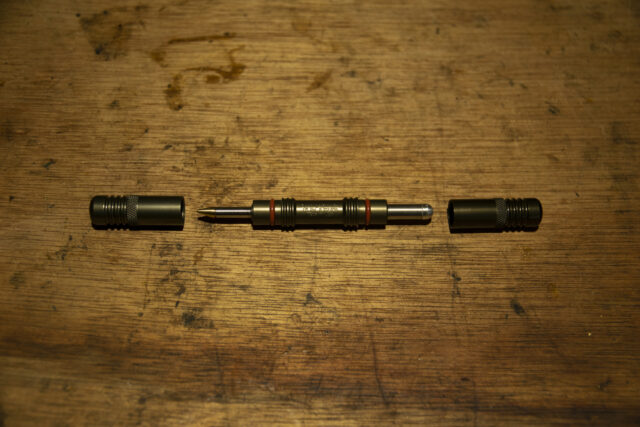
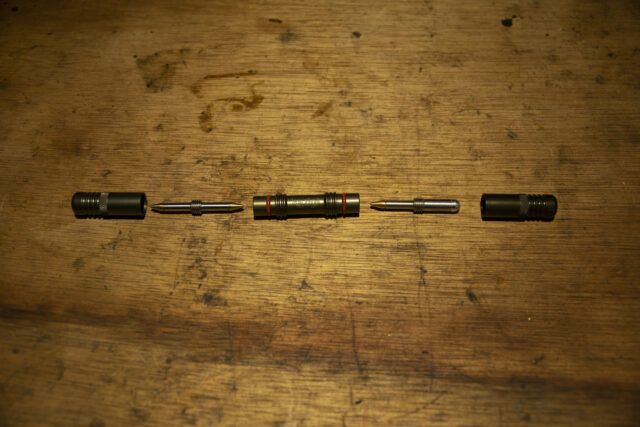

I’ve had better results with Dynaplugs than anything else when it comes to actually fixing tires and getting me back on the trail. The plugs are definitely more expensive than a lot of other options ($12 for a 5-pack of the standard size ones, or $13 for three of the bigger Megaplugs), but for how well they work, I’ll take it.
But Dynaplug makes a lot of different kits that all use their excellent plugs, so what’s great about the Racer Pro, specifically? Compared to a lot of other shorter, bigger-diameter plug kits (such as the Dynaplug Pill), I just find the longer, thinner form factor of the Racer Pro to be easier to carry and less obtrusive in a small hip pack. It’s also a bit easier to hold and use than the stubby, squat versions, but still holds four plugs (three standard, one mega). Getting flats sucks, and in those moments I want something that’s easy to use and effective in getting me back on the trail. The Dynaplug Racer Pro has done a great job of bailing me (and a few friends who’ve needed to bum mine) out.
Darn Tough Run Micro Crew Ultra-Lightweight
MSRP: $20
Size Tested: Large
Materials: 52% Nylon, 42% Merino Wool, 6% Lycra® Spandex
Drew Kelly: Finding running socks that last more than 75 miles has been unexpectedly difficult this summer. With premature holes in various toes, heels, and cuffs, I’ve begrudgingly been stuffing my sweaty feet into thicker socks, which seemed to be a necessary trade off until I was able to bring myself to spend more money on more pairs of potentially wimpy socks.
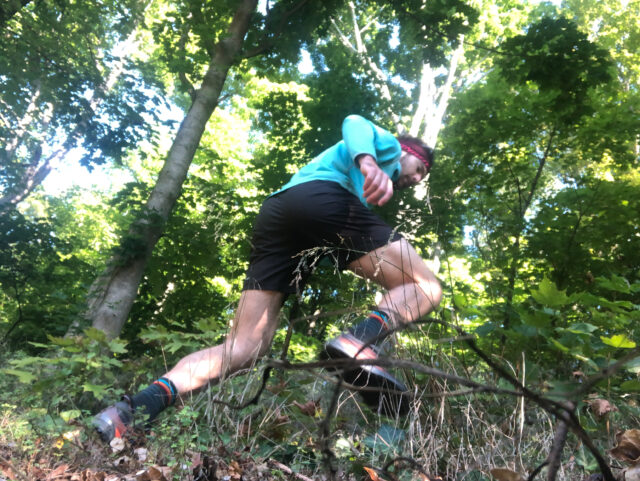

I decided to return to Darn Tough, who, historically, I’ve held in the highest esteem for the longevity of their products despite recent whispers about their decline in quality. Regardless, I still needed some un-hole-ly socks, and I was drawn to Darn Tough’s admirable Vermont-based manufacturing.
At first I was worried: I had gone all-in on the “Ultra-lightweight” model, the thinnest of Darn Tough’s socks, and now also the thinnest sock I owned. But after reaching the unambitious 75-mile sock-life benchmark I couldn’t fight my way past this summer, my pair of Run Micro Crew Ultra-Lightweight socks still shows no sign of wear. Dang (Darn!)! So for the moment, these are my socks of choice.
But not only for reasons of durability. They fit more precisely and breathe better than any other sock I’ve worn. And the high merino wool content helps keep the most unfortunate of sock-related descriptors at bay: no crustiness, stickiness, or stinkiness. So for now, I’m darn impressed, and moving toward agreeing with the brand’s implied toughness.
Ride Concepts Tallac BOA
MSRP: $190
Luke: I’m always on the hunt for the ideal flat-pedal shoe, and the Tallac BOA shot to the top of my list of shoes to try when I first saw it. BOA closure, burly but potentially breathable upper, Ride Concepts’ grippiest rubber, and a tread that looked like an ideal combo of on- and off-bike traction — it seemed like it could be pretty sweet.
I’ve now been using it for all my rides for a few weeks, and I’m a big fan. Ride Concepts’ Max Grip rubber compound was already my favorite, since it offers enough traction to keep my feet on the pedals when I want while offering easier on-pedal adjustment than Five Ten’s grippier Stealth rubber options. However, relative to the Ride Concepts Powerline, the Tallac’s tread equates to notably better off-bike grip, particularly on softer / gritty / loose conditions like loam.

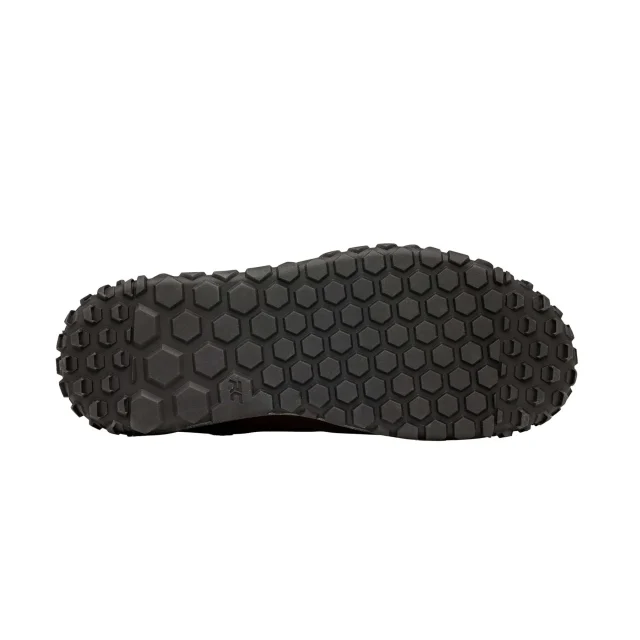
Ride Concepts offer the Tallac with a BOA or traditional lace closure, and so far, I really like the BOA option, though I think there’s a bit of room for improvement. Namely, the BOA does a great job of snugging down the instep area (once I’ve really cranked it down), but it doesn’t do a whole lot outside of that area. Fortunately, the Tallac BOA’s forefoot velcro strap helps there, but I’d be interested in seeing the BOA lacing extended farther down the shoe, and/or adding a second dial for an even more … dialed … fit. Still, I love that the BOA is easy to adjust on the go, and when I want to take off the shoes, all I have to do is pop out the BOA and throw open the strap.
I also still appreciate Ride Concepts’ D3O insoles, which add a level of damping to the shoes and make them feel a bit more calm / planted on the pedals in rough terrain. The Tallac BOA’s Cordura upper has also been pretty sweet so far; it’s far more breathable than the synthetic microfiber of their Powerline, while still feeling quite burly. It absorbs water quicker than shoes like the Powerline and Giro Latch, which feature almost faux-leather-like uppers, but the upside is that the Tallac dries faster when the interior has gotten wet.
In terms of fit, interestingly, the Tallac BOA feels a bit longer to me than the Powerline, but not too different in terms of width; Ride Concepts calls the Tallac’s fit “low volume,” but as someone with a somewhat wide foot, it hasn’t felt too narrow for me. In terms of stiffness, the Tallac feels fairly similar to the Powerline — i.e., maybe a bit stiffer than average for a do-it-all flat shoe, but not so stiff that walking feels odd.
Overall, I think the Tallac BOA is a sweet flat-pedal shoe for those who prioritize traction both on and off the bike; prefer a more breathable upper over a more water-resistant one; and who like the quick adjustment potential of the BOA system.
Outdoor Vitals Fortius 2P Trekking Pole Tent
MSRP: $339.97
Kara: I suspect I am going to have a lot more to say about the Outdoor Vitals 2P Fortius Tent as I spend more time with it, but I finally got a chance to use it on a backpacking trip last weekend and I was really stoked with how well it did on its first foray. Because this trip was going to be pretty heavy on mileage, I packed pretty light. But at the same time, I knew I wanted adequate shelter, just so long as I could keep my pack to a reasonable weight. I have spent a lot of time using different tents, but this was my first time using a tent reliant on trekking poles. A knee injury a couple years ago meant I had to get used to hiking with trekking poles on technical terrain, so the Fortius 2P made sense for me.
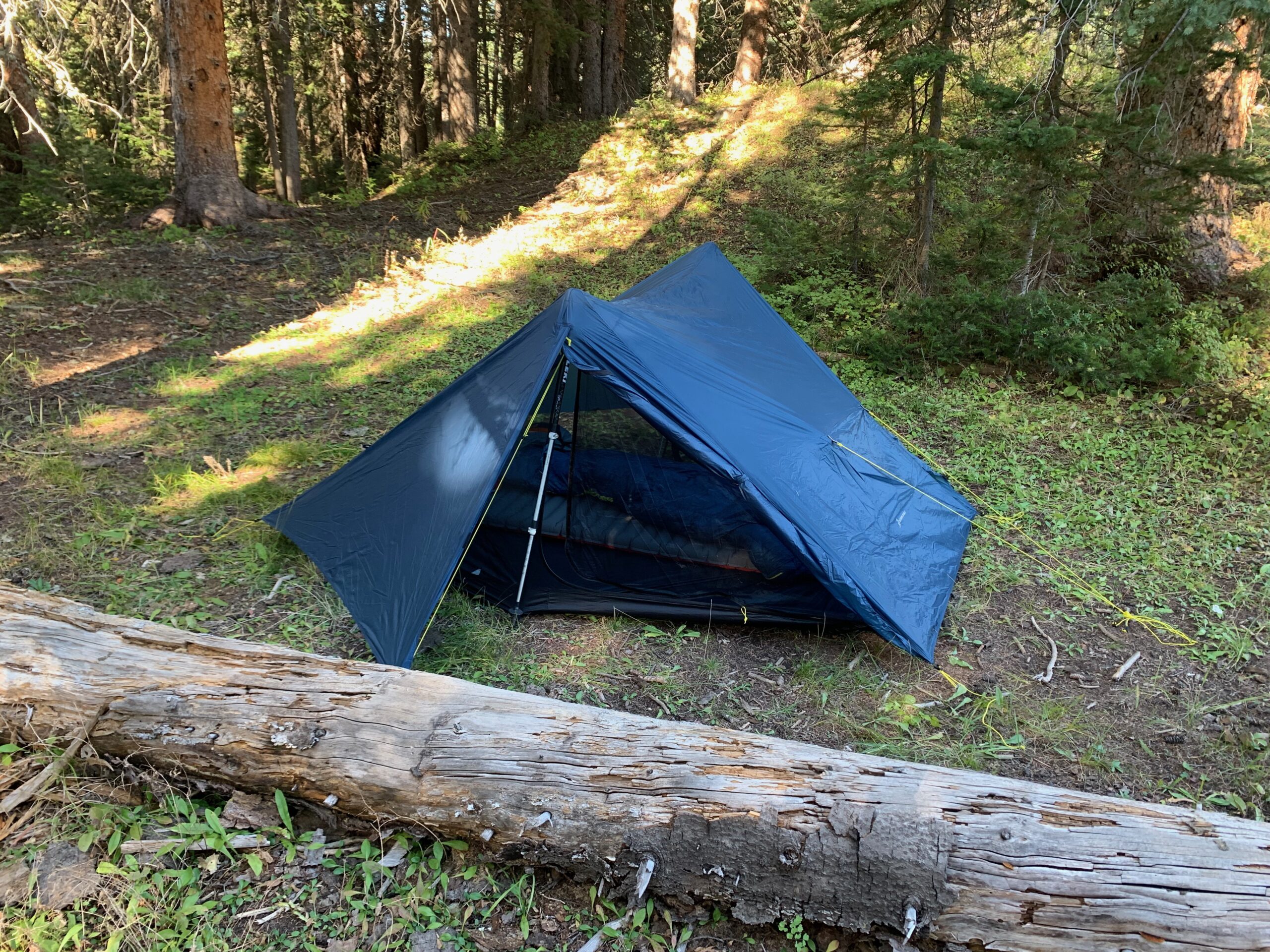
Setting up the tent was quite easy and intuitive, though I did spend some time watching the Outdoor Vitals Youtube tutorial before heading out. From a performance standpoint, the tent did awesomely. Granted the weather was amazing, with sunny skies and low wind, leaving me curious to see how well the Fortius fares in inclement weather. Outdoor Vitals states that their tent works in nasty weather and is built to be “storm worthy,” but I’d like to test that myself. The only real issue I noticed, or rather, learned, was that opening the doors on either side between the velcro slots, even ever so slightly, definitely helped reduce condensation and provided more airflow and breathability. The Fortius is built with several well-thought-out details, such as adjustable guy lines that are easy to tension / loosen, and lots of extra reinforcements like additional tie-downs when the weather is bad.
I think the tent’s most impressive feature is just how spacious it is. In general, it’s a very roomy 2-person tent, especially in regard to headroom and width. My partner and I were both impressed, as it definitely stands out as one of our less claustrophobic 2-person tents. The Fortius also offers large vestibule space outside of the doors, serving as protected storage for shoes, backpacks, etc. Additionally, the Fortius 2P is built with a door on each side, which makes things so much easier for two people.
I hope to test the tent a couple more times this fall, but in the meantime, I am really intrigued by the concept of a lightweight “trekking pole” shelter. Being able to utilize gear — such as trekking poles — for different purposes while out on a quick mission through the mountains is definitely smart and efficient.
Cognative MTB Tech Lite Summer Glove
MSRP: $30
Kara: I have mentioned before that I really prefer minimalist mountain bike gloves, favoring those that prioritize breathability, are easy to take on and off, and have good grip. I don’t really look for too much protection, and I definitely dislike bulky gloves with too many features. The Cognative Lite Summer Glove meets all those marks and has quickly become one of my favorite gloves this summer.
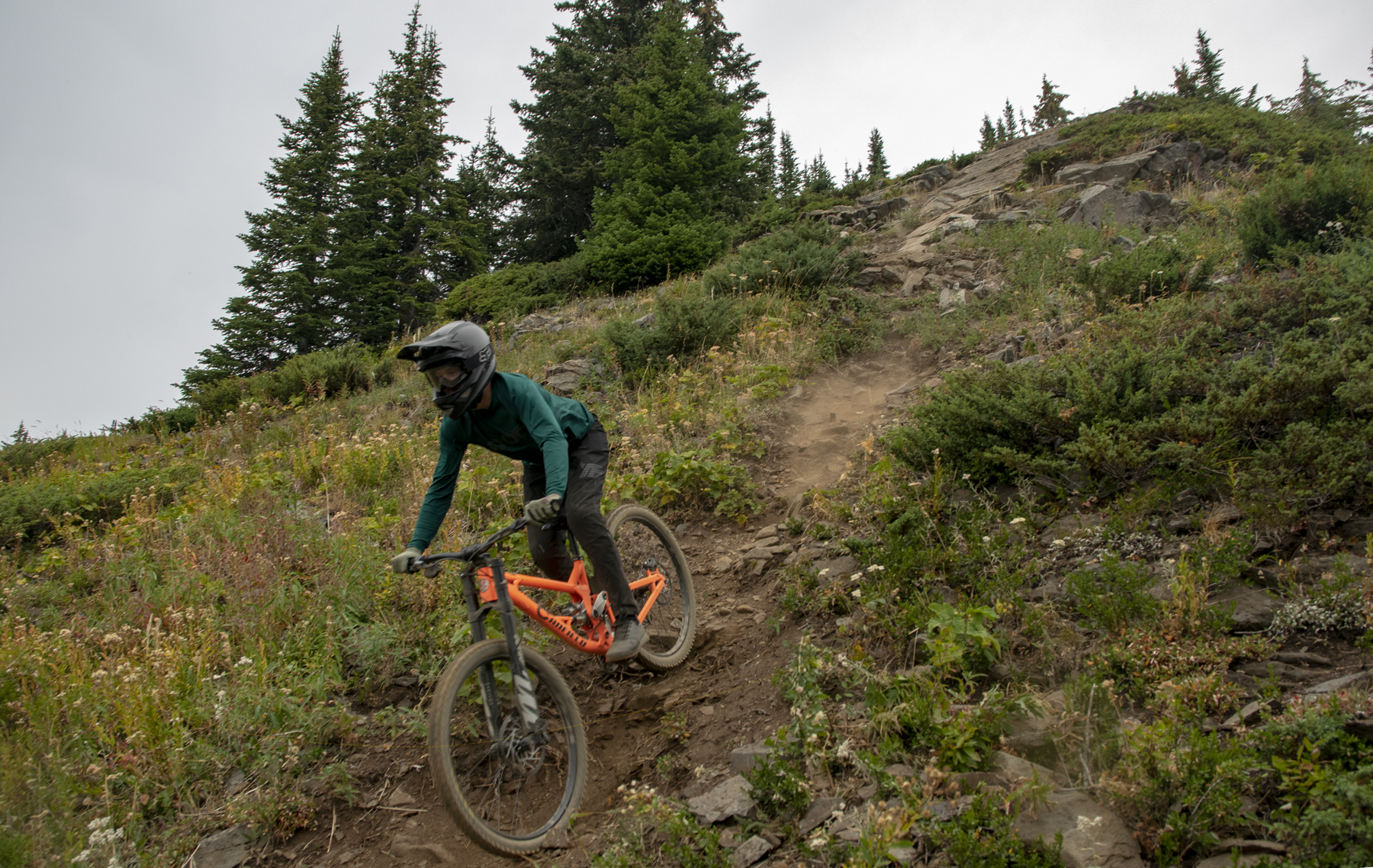
Most notably, the glove is highly comfortable and breathable even on the hottest days. It provides decent protection while still feeling minimal. The Tech Lite glove is unrestrictive and doesn’t hinder dexterity at all. And lastly, it is easy to take on and off and I don’t find myself getting frustrated when I need to rip it off to do something without gloves on. After quite a bit of use over the last month, the Tech Lite glove also seems to be holding up without obvious signs of wear. For someone looking for a lightweight, simple yet functional bike glove at a good price, the Cognative Tech Lite is a great option, plus Cognative offers a ton of colorways and patterns, too.
David: Yup. Like Kara, I’m all about wearing the most minimal gloves that I can get away with for the prevailing weather conditions, and the Cognative MTB Tech Lites are great. They’re thin, super-breathable, and quite snug fitting. The materials used feel fairly standard — a perforated microfiber palm, plus a stretchy mesh back — but the patterning around the fingertips in particular is really nicely done; it fits great and feels well designed to stop those seams from blowing out, as can be a problem on minimalist, tight-fitting gloves. My pair are holding up great so far, and I’ve got high hopes that they’ll continue to do so.
Trove Swift Wallet
MSRP: £30–£35
Luke: For many years, I’ve always carried a Mighty Wallet bi-fold, which is made of a Tyvek-like material and is pretty thin as far as full-size wallets go, but it still took up a fair bit of space in a pocket and didn’t look all that great. Looking into ways to downsize the way I carry the few cards I need on a daily basis, I stumbled upon Trove, and I’ve become a very big fan of their Swift Wallet. It’s super compact and lightweight, but still lets me carry 6 cards and some cash split between its 3 compartments (Trove says its max capacity is 10 cards).
The wallet is super simple, being primarily composed of a stretchy elastic and leather or leather alternatives (and made in England).

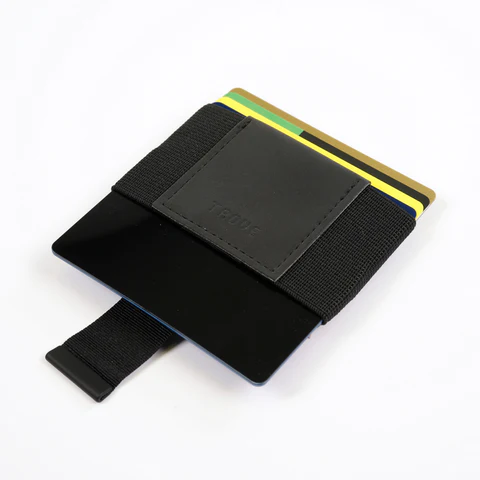
The “Swift” version includes a little pull tab in one of the compartments that lets you easily pop out the 2 cards you have in that compartment, which is where I keep my main credit card and ID. Switching to this compact cardholder meant I had to reduce the amount of stuff I keep in my wallet, but I’ve loved the simplicity of it, and I hope that it will last for years to come. It seems really well made and respectably priced, given it’s made in England with Italian textiles and leather, so my expectations are high.
Cognitive MTB Women’s Guide Trail Short
MSRP: $99.95
Kara: Sadly, I received the Guide Trail Short shortly after we published our Annual MTB Short Roundup, and in the time since, they’ve quickly become one of my favorite shorts this summer, much in line with my favorite in the Roundup, the 7mesh Slab Short. The Guide Short is minimalistic but has the features I most prioritize when it comes to a good mountain bike short, including an adjustable waist, comfortable yet durable material, and both a functional and flattering fit.
The Guide Short’s material provides a nice balance of flexibility, durability, and breathability. There have been some major temperature swings lately as we approach fall, and the Guide Short has proven to be apt at both breathing well when it is really hot, but also being thick and protective enough to offer a bit of insulation against the cold mornings and evenings.

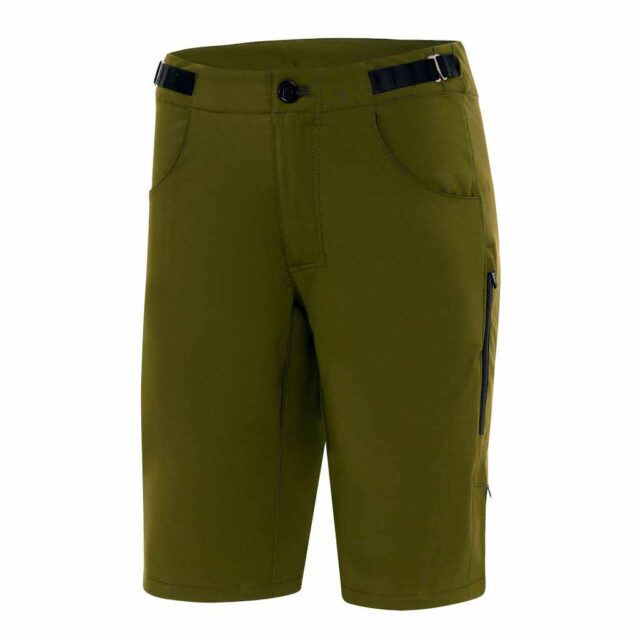
In a Large, the Guide Short fits quite similarly to the 7mesh Slab Short, albeit a little bit shorter inseam with the Glide Short. It’s a fit that is both flattering yet spacious, making it comfortable for long days on the bike. Feature-wise, the Guide Short offers two hip pockets, two zippered thigh pockets, and a hook and webbing waist adjustment. The Glide Short is a well-rounded option that I find myself grabbing quite often simply because of how comfortable it is.
Chamois Butt’r Ultra Balm
Size: 5 oz.
MSRP: $29.99
Matt Mitchell: For all that is remarkable about the human body’s resilience, its ability to cope with and recover from great physical tragedy, to continue on despite immense pain, it is often the most minor discomforts that feel so debilitating; I’m speaking of the stubbed toe, paper cut, hangnail variety. For endurance athletes — runners in particular — another type of affliction looms: chafing. Repetitive motion can be unkind to our folds and creases, and finding ways to adequately keep our body’s various junctions lubricated and gliding smoothly during exercise can be, well, a feeling-out process.
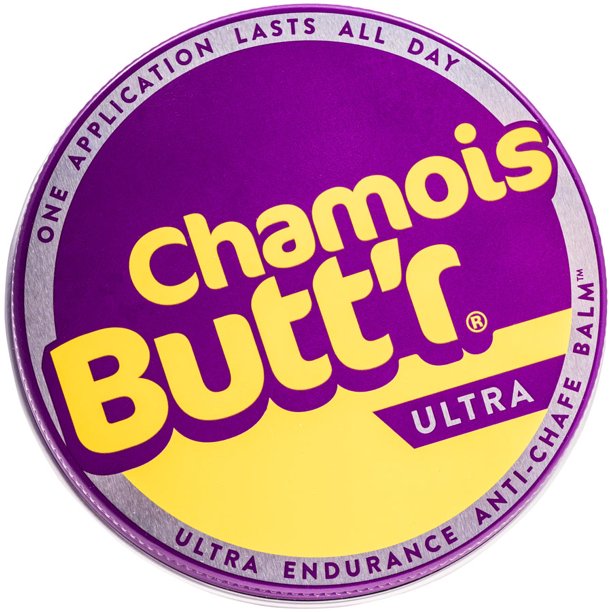
My history with anti-chafe balms is full of upheaval and revolt; the duration of activities I enjoy usually outlasts the effectiveness of most products, leaving me with tracts of raw skin, terrified of my next shower. The few options I’ve tried with true staying power, say, for more than 6 hours or so, are made with irritating chemicals I can’t pronounce, much less feel great about spreading between my legs. I clearly needed an industrial strength salve to keep me in motion sans friction, one that would also be friendly to my skin (our largest organ, after all!).
Since its first application, Chamois Butt’r’s Ultra Balm has done exactly that. While advertised to ultra-distance cyclists, it doesn’t discriminate towards other sports, in my case, trail running. The balm has a natural oil and beeswax base and is suitable for all skin areas, though I probably wouldn’t eat it. And because it’s not water-based, Ultra Balm holds up well against sweat for all-day protection. With a subtle fragrance and a pomade-like texture, it goes on smooth, doesn’t run when heated, and comes off easily in the shower you now have no reason to fear.
Walton Wood Farms Sugar Coat It Lip Scrub
MSRP: $10.95
Kristin: I’ve used body scrubs in the past and I still have some in my shower, but I never thought to use something similar on my lips, and let me tell you, it’s been a game changer. Walton Wood Farms Sugar Coat It Lip Scrub is 100% natural, made with sugar, shea butter, jojoba seed oil, peppermint oil, glycerin, lemon peel oil, and Vitamin E. It smells wonderful and makes my lips look and feel soft and smooth.
I live in a high, dry climate and I frequently apply lip balms, but the Lip Scrub is like a spa treatment for my lips, hydrating them more thoroughly all in less than a minute. If you struggle with dry, dull, or cracked lips, I highly recommend checking out the Lip Scrub.
